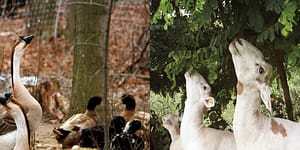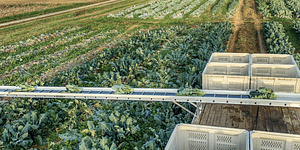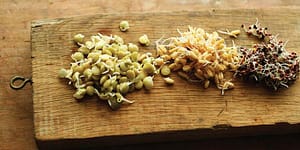5 Reasons You Should Pick-Your-Own This Summer

Summer is here, and the days of fresh vegetables and local harvests are near. But this doesn’t mean only those with farms and gardens should feel the amazingness of picking their own crops. You may recall a moment last year when your friend asked, “Are those your blueberries?” when you brought pie to the potluck.
“Uh, no,” you may have replied, “Ummm. Yeah. No. Umm.” Well, this summer is different. This summer you can say, “Yes. Those are my blueberries. I picked them, I froze them, and I used them for this pie.” Not just for bragging rights. This is cause for celebration, I think; it’s possible for even the most urban people to can their own jam and harvest their own rhubarb.
Yep. Anyone can farm for a day, and then have a freezer stocked with fresh goods for the rest of the season. And the news gets better. You don’t need to quit your job, move to the country, and plant a blueberry patch. No indeed. You don’t even need an urban garden or a square-foot window box. In fact, for all those people out there without your own gardens and without the desire to tend one ever, you can still have your own fresh food—all you have to do is pick your own.
Pick-your-own, also called U-Pick or PYO operations, are said to have started in the Depression era, when farmers couldn’t afford to pay their pickers, so they cut out the middleman and had the consumer come straight to the source. Now it’s become a fun and sustainable tradition that benefits both the farmer and the consumer.
Whether it’s CSAs (Community Supported Agriculture) offering seasonal trips to their “sponsor” farms where members can pick as their heart desires, meet the farmers and put a ‘face’ to the contents of their plates, or farmers who’d rather not deal with the weekly market fees or corporate commissions—picking your own is a good way to support your local growers, get fresh air, and stock your fridge affordably.
Prices are really fair, and decided in different ways; one PYO I went to left a pail by the gate of their pumpkin patch, and pickers gave what they could. Some farms hand out rubber bands, and charge per band (assuming one band gathers one bunch.)

- It’s an adventure: You might be surprised (even in New York City) how close farms are to where you live. Take your kids. Your friends! Bring a picnic lunch! You’ll get some sun, meet new people, and get to dig your hands in the dirt. And there’s no commitment at all, you can walk away arms full of bounty, never having had to deal with the growth cycle (in all its glory, with all its guts.)
- You’ll stock your freezer: Not to promote over-refrigeration, but if you have a freezer, this is a great way to ensure you have fresh whole fruits and veggies all year long. Think about Sunday pancakes with strawberries straight from your local farm, and no trip to the store needed. All you need is some big Ziploc bags, and to clean out old Hot Pockets that have frozen into bricks.
- You can make your own preserves: It’s not as hard as it may seem, and with all that fruit saved up, you and your family or friends can save projects for rainy days. Think homemade jam for holiday gifts. Think homemade chutney as a housewarming gift for your friend. And many of you may not know this, but it’s possible to preserve food without canning. And in many cases without freezing, too. All you need is Mason jars, which are like a dollar. It’s the gift that keeps on giving. PYO.
- It’s good for the environment: First of all, supporting local farmers whenever possible promotes sustainability and values of ecological preservation, which benefits you and benefits the earth. If you carpool there, which many CSAs organize (you don’t even need a car!), you’re also cutting down on fossil fuels. Plus, supporting the Pick-Your-Own culture is a political act; you’re joining the movement against corporate food and big business agriculture. And there ain’t nothing wrong with that.
- It’s healthy for your body and mind: Getting your hands dug deep in the land feels incredible, and increases self-confidence. The food you’ll pick is fresher than any farmer’s market or co-op, and picking it yourself makes everything taste all the sweeter. Stocking your freezer with fresh fruits and veggies promotes healthier meals, because asparagus tastes completely different when you cut it at a farm. You’ll think they’re candy! And every time you spread jam on toast, or plop raspberry hot cakes on the griddle, you’ll know you had a part in keeping local farms in business, and in the very production of what you’re consuming.
So now it’s time to get started; the summer is basically here.
Find your local Pick-Your-Own farm. Click on your state, and start the planning process! www.pickyourown.org
Recommended Reads
Recent Articles
Have you heard of silvopasture? This system of managing grazing animals is an ancient practice that integrates trees and pasture into a single system for raising livestock. These systems are managed for both forest products and forage, providing short-and long-term income sources in a mutually beneficial way for healthier animals, better soil, less pest control and mowing, and…
Read MoreOxeye daisies are one of the most important plants for pollinators including beetles, ants, and moths that use oxeye daisies as a source of pollen and nectar. Instead of thinking about removing a plant like oxeye daisy, consider how you can improve the fertility and diversity of habitat resources in your home landscape, garden, or…
Read MoreSo you want to start reaping your harvest, but you’re not sure where to start? Learn how to break down the options of harvesting tools!
Read MoreWhat’s so great about oyster mushrooms? First, you can add them to the list of foods that can be grown indoors! They are tasty, easy to grow, multiply fast, and they love a variety of substrates, making oyster mushrooms the premium choice. The following is an excerpt from Fresh Food from Small Spaces by R. J.…
Read More







